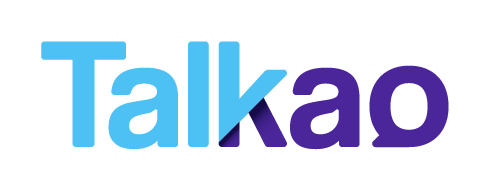Mandarin is the most spoken language on Earth. It is the official language of China and is taught in schools, universities, and official institutions. But beyond being the lingua franca of the world’s most populous country, Mandarin is a fascinating and rich language.
As we’ll see, learning Mandarin is actually much easier than it might seem at first glance.
For many Westerners, pronunciation and writing can appear confusing, but with practice, they become more intuitive. Once you overcome the challenge of tones—Mandarin has four distinct tones—everything becomes much simpler. The same applies to writing, as Mandarin uses a simplified script, making it more accessible than other Chinese dialects.
Today, we’ll explore a language full of nuances that is an essential part of one of the world’s most enigmatic cultures. Let’s take a journey into Mandarin Chinese and the beauty of its linguistic structure.
But first things first…
What is Mandarin and how does it influence the modern world?
A common misconception among those unfamiliar with Chinese culture is the belief that Chinese is a single language. Therefore, the only language spoken across the entire country. This generalization comes from a simple lack of knowledge.
China is not only the second-largest country in the world but also the most populous. In fact, China alone has almost the same population as all of Europe combined.
Moreover, China is a multicultural country with an incredible diversity of regions. Within its borders, you can find everything from harsh deserts to some of the coldest places on Earth. The same diversity applies to its people and languages.
China is home to hundreds of ethnic groups, all united under one national identity. As a result, it holds the title of the country with the most regional languages and dialects in the world—there are over 900 languages spoken within its borders!
Now, imagine the challenge of uniting over 1.5 billion people who speak so many different languages. Sounds impossible, right? Well, let’s see how China managed to do it.
Putonghua: The standard Mandarin of Beijing
As we’ve seen, China is vast and diverse, with nearly a thousand languages spoken across different regions, some separated by thousands of kilometers.
To ensure linguistic unity, the Chinese government established Mandarin as the official language. This language policy is based on Putonghua, or Standard Mandarin—but what exactly does that mean?
The solution to China’s linguistic diversity was to standardize the Mandarin spoken in Beijing as the official national language.
However, does this mean that Mandarin eliminated all other languages in China? Not at all. In fact, bilingualism and multilingualism are common throughout the country. Many people speak one language at home and another in official settings.
For example, someone who speaks Yue (Cantonese) or Wu (Shanghainese) will continue to use it in their daily life. However, at school or work, they must use Mandarin as the official language. But why was Mandarin chosen as the official language instead of another Chinese dialect?
Why was Mandarin institutionalized as China’s official language?
China’s history is not just fascinating—it is one of the oldest civilizations on Earth, dating back over 2,000 years. One of its defining characteristics is that China has always been a centralized nation.
From ancient times, China was ruled by a central government, a system that existed long before modern states. Even in the imperial era, the Emperor and his court governed vast territories through laws and decrees.
For an imperial order to be enforced across China, it first had to be understood. Therefore, governors and military leaders throughout the empire had to learn the Emperor’s language—which was none other than Mandarin (Putonghua).
This linguistic unification has remained in place for centuries, making Mandarin a mandatory subject in all Chinese schools. Even in households where other languages are spoken, children are required to learn Mandarin as part of their education.
And the result?
Mandarin has become the most spoken language in the world—and its influence is only growing.

The global expansion of Mandarin
One undeniable fact in human history is that China has played a central role in social and commercial development. Long before Marco Polo set foot in China, the Chinese were already expert traders. In fact, historical records show that China’s trade routes extended as far as the Middle East centuries ago.
Although China has gone through periods of isolation, its cultural and economic influence has remained constant. Additionally, the Chinese diaspora has spread to every corner of the planet, strengthening international trade relations and reinforcing China’s leadership role.
Today, with open markets and financial expansion, China has become one of the largest economic powers in the world. And with every product that crosses the oceans and every Chinese emigrant who reaches distant lands, Mandarin spreads along with them.
It is estimated that over a billion people speak Mandarin today. And while English remains the most widely spoken language, Mandarin is the language with the most native speakers.
But what exactly is the difference? Let’s break it down.
Mandarin as a native language vs. English as a learned language
There is no direct competition between languages, but Mandarin and English have been at the center of the debate over the world’s most spoken language. However, the distinction lies in a few key factors:
English as a native language
Around 400 million people speak English as their mother tongue—meaning it is their first and only language from birth. This excludes those who speak English as a second language or as a shared language (such as in Commonwealth countries or regions of the UK like Scotland or Northern Ireland).
Mandarin as a native language
While Mandarin isn’t the only language spoken in China, it remains the most widely spoken native language in the world. Nearly 950 million people speak only Mandarin, making it the only language they have known since birth.
We get it—this might seem like splitting hairs, but in linguistic terms, this subtle distinction is significant. Why? Because of the importance of language purity—if such a thing even exists today. Let’s explain further.
Official languages vs. evolving languages
When a country declares a language as official, it doesn’t just apply to official documents. It also means that rules are set in place to ensure that the language remains standardized and doesn’t change over time.
A great example of this is Spanish. The Royal Spanish Academy (RAE) regulates the language, ensuring consistency across all Spanish-speaking countries.
The same principle applies to Mandarin. Since the era of Mao Zedong, the Chinese Communist Party established strict linguistic rules to unify the written language and standardize Mandarin over regional dialects.
This approach ensured that official decrees could not be “misinterpreted” across different regions. However, language experts debate whether this rigid standardization is positive or negative.
- The upside? It preserves the language and ensures it spreads without distortions.
- The downside? It restricts natural linguistic evolution, preventing borrowed words and organic changes.
Which is the right approach? That’s a debate that could go on for years without a definitive answer.
So, let’s get back to our main point…
Is Mandarin easy to learn?
Some say that Mandarin is the hardest language in the world to learn. This belief, which is not entirely unfounded, often comes from the complexity of Mandarin writing. Chinese languages like Cantonese share a similar writing system, based on intricate symbols. In fact, there are over 50,000 written characters, where even a slight stroke variation can completely change the meaning.
For Western learners or those familiar with the Latin alphabet, this vast number of characters can seem overwhelming. However, there are methods that simplify the learning process.
Pinyin: A simplified approach to learning Mandarin
Pinyin, or Simplified Mandarin, is a system that transcribes Mandarin into Latin letters. This method makes learning much easier compared to traditional Mandarin writing.
Because of its simplicity, Pinyin is widely used by Mandarin teachers and language academies around the world. By using this system, learners can focus on pronunciation and speaking skills before tackling the complexity of Chinese characters.
Mandarin is a tonal language
Speaking Mandarin is very different from writing it. In fact, for many learners, speaking Mandarin is much easier than writing it. This is because Mandarin has simple grammatical structures and relies heavily on tones.
The language has four active tones and one neutral tone, meaning that pronunciation is essential for conveying the correct meaning. Additionally, Mandarin includes nasal sounds, guttural expressions, and phonetics unfamiliar to Western speakers. Mastering these unique sounds is crucial for achieving fluency.
| Mandarin tone: key to communication | ||
|---|---|---|
| Tone | Example | Meaning |
| First tone (high and level) | mā (妈) | mother |
| Second tone (rising) | má (麻) | hemp |
| Third tone (descending and ascending) | mǎ (马) | horse |
| Fourth tone (descending) | mà (骂) | scold |
How technology makes learning Mandarin easier
Thankfully, modern translation apps like Talkao Translate make learning Mandarin much simpler. With Talkao, you can:
- Practice pronunciation using speech recognition tools
- Improve listening skills through audio-based learning
- Use imitation techniques to train your ear and refine pronunciation
Additionally, Talkao’s camera translator and augmented reality translator allow you to instantly translate any Mandarin text around you. With just your smartphone, you can understand and interpret written Mandarin within seconds.
Common Mandarin phrases (and the most useful ones)
To help you get started, here are some useful Mandarin expressions that will come in handy when you visit China…
Greetings and daily phrases
| Greetings and Basic Introductions in Mandarin | ||
|---|---|---|
| Mandarin | Pinyin | Meaning |
| 你好 | Nǐ hǎo | Hello: The most common and basic way to say hello. It is informal and used in most situations. |
| 你好吗? | Nǐ hǎo ma? | How are you?: Common question after greeting, show courtesy. |
| 再见 | Zàijiàn | Goodbye: Basic farewell for any situation. |
| 早上好 | Zǎoshang hǎo | Good morning. |
| 晚上好 | Wǎnshàng hǎo | Good night. |
| 请 | Qǐng | Please. |
| 谢谢 | Xièxiè | Thank you. |
| 不客气 | Bù kèqì | You are welcome. |
| 对不起 | Duìbùqǐ | I am sorry. |
| 请问 | Qǐng wèn | Excuse me. |
| 我不懂 | Wǒ bù dǒng | I don’t understand. |
| 你会说英语吗? | Nǐ huì shuō yīngyǔ ma? | Do you speak english?. |
| 请慢一点说 | Qǐng màn yīdiǎn shuō | Please, can you speak slower?. |
| 你多大了? | Nǐ duōdà le? | How old are you?. |
| 我是学生 | Wǒ shì xuéshēng | I am a student. |
| 你是哪里人? | Nǐ shì nǎlǐ rén? | Where are you from?. |
| 很高兴认识你 | Hěn gāoxìng rènshì nǐ | Nice to meet you!. |
Most useful phrases
| Common phrases in Mandarin | ||
|---|---|---|
| Situation | Mandarin | Translation |
| At the airport | 请问登机口在哪里? (Qǐng wèn dēng jī kǒu zài nǎlǐ?) | Where is the depart gate? |
| 我的航班延误了吗? (Wǒ de hángbān yánwù le ma?) | It is my flight delayed? | |
| 我可以托运行李吗? (Wǒ kěyǐ tuōyùn xínglǐ ma?) | May I check-in my luggage? | |
| At a Hotel | 我有预订 (Wǒ yǒu yùdìng) | I have a reservation |
| 请问房间有无线网吗? (Qǐng wèn fángjiān yǒu wúxiàn wǎng ma?) | My room has Wi-Fi? | |
| 退房时间是什么时候? (Tuìfáng shíjiān shì shénme shíhòu?) | At what time is the check-out? | |
| In Emergencies | 我需要帮助! (Wǒ xūyào bāngzhù!) | I need help! |
| 请打电话给警察 (Qǐng dǎ diànhuà gěi jǐngchá) | Please, call the police! | |
| 我不舒服 (Wǒ bù shūfú) | I’m not feeling well | |

















